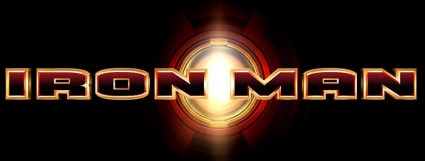2000-2009: A Technological Retrospective
Wow, what a difference 10 years makes. In a couple weeks 2009 will be over, and with it a whole decade of technological innovations. This past decade brought us everything from the Sony PlayStation 2 video game console to augmented reality. Obviously, I cannot mention every single innovation that came out in the past ten years. However, I can mention those innovations that were, at the time of their release, revolutionary in some form. The following is a list of just that:
2000
- Innovation:
- Sony PlayStation 2
- How was it revolutionary?
- The console not only played highly-graphical video games, but was also the first of its kind to play DVD movies. At the time, stand-alone DVD players were fairly expensive, costing $300 or more. The popularity of the PlayStation 2 helped push the DVD format into the mainstream market.
2001
- Innovation:
- Apple iPod
- How was it revolutionary?
- The original iPod not only helped bring Apple back into the forefront of modern technology, but also sparked the MP3 revolution. This is the device that pushed CD players out of the market and replaced it with hard disk based music jukeboxes.
.
- Innovation:
- Microsoft Windows XP
- How was it revolutionary?
- This is the operating system that most people and businesses still use today. It is a force to be reckoned with, even for Microsoft which has released two newer operating systems (Vista, 7) in more recent years.
.
- Innovation:
- ReplayTV
- How was it revolutionary?
- ReplayTV was the original TiVo, in a matter of speaking. It was the first DVR to come to market that gave TV viewers the ability to pause, fast forward, rewind, and even record live TV broadcasts. Today, all cable and satellite TV providers offer DVR’s to their customers.
2002
- Innovation:
- Mac OS X Jaguar
- How was it revolutionary?
- The new version of Apple’s operating system included improvements in stability, speed, and added several new applications. The addition of Quartz Extreme processing allowed all graphical tasks to be handled by the systems Graphics Processing Unit (GPU), instead of the Central Processing Unit (CPU).
2003
- Innovation:
- XM Satellite Radio
- How was it revolutionary?
- Subscription-based satellite radio was the biggest change in radio since FM. XM’s main selling points were coast-to-coast channels and fewer commercials than FM radio. The service has become so popular that several automakers now offer it as an option in their vehicles.
- Innovation:
- Intel Pentium M Processor
- How was it revolutionary?
- Intel new mobile processor standardized wireless networking in laptops and spurred the growth of wireless hot spots. Today, free wireless Internet access can be found all over the world in coffee houses, restaurants, and even in airplanes.
.
- Innovation:
- Apple iTunes
- How was it revolutionary?
- By pairing their iTunes music program with their iPod MP3 players, Apple effectively figured out how to get consumers to buy music online, which is something the record labels themselves could not do. What made it possible was iTunes intuitive interface and the limited restrictions on usage.
- Innovation:
- Camerphones
- How was it revolutionary?
- Cellphones with built-in cameras, such as the LG VX6000 (shown), came to market in 2003 and were a huge hit. So much so that nowadays all modern cellphones, even basic models, are capable of taking and sending pictures.
.
2004
- Innovation:
- Bluetooth
- How was it revolutionary?
- The new wireless communications protocol made big waves in 2004 when Bluetooth headsets became the must have accessory for cell phones. A few years later, after their benefits were noticed by US governmental officials, use of Bluetooth headsets became mandatory in the US.
2005
- Microsoft Xbox 360
- How was it revolutionary?
- Microsoft’s latest video game platform introduced their redeveloped Xbox Live service, which allows gamers to play against each other all over the world. The console has recently also become a social and media hub, with features such as Facebook and Netflix integration.
2006
- Innovation:
- Youtube
- How was it revolutionary?
- This video sharing site sparked an Internet revolution by allowing videos to be uploaded and shared for free.
- Innovation:
- Toshiba HD-A1
- How was it revolutionary?
- Toshiba’s original HD-DVD player sparked the movement to high definition movies at home.
2007
- Innovation:
- Nintendo Wii
- How was it revolutionary?
- The Nintendo Wii’s major selling point is it’s motion controls, which adds an extra level of interactivity to it’s games.
- Innovation:
- Apple iPhone
- How was it revolutionary?
- The extreme popularity of the original iPhone sparked the touch revolution, inspiring other phone makers to offer models with touch sensitive user interfaces as well.
2008
- Innovation:
- Macbook Air
- How was it revolutionary?
- The popularity of the Macbook Air inspired other notebook makers, such as Dell and Lenovo, to offer smaller and more portable notebook models.
2009
- Innovation:
- Augmented Reality
- How was it revolutionary?
- Augmented reality is a brand new technology that promises to change the way we see the world around us. It started this year with smartphone applications, such as Layar and Yelp, that provide users with information based on what they point their phones camera at.
If you have read this far, then you should realize by now that the past 10 years has brought a number of revolutionary technologies. I simply cannot wait to see what the next 10 years brings us. Look out for my next Technological Retrospective sometime in December 2019. That is, if WordPress and the Internet are still around….


















